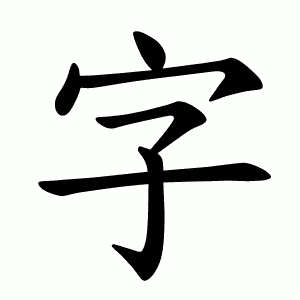字
- character;
- letter;
- name;
Etymology
Phono-semantic compound:
宀 (집 면) – meaning component, representing a house;
子 (아들 자) – sound component, also contributes meaning (child).
Original sense was “to give birth to a child.” By the Han dynasty, 字 was borrowed (假借) to mean “written character.”
Over time, it broadened to mean “letter, character” and also carried the sense of “name”—which is why it appears in compounds like 文字 (문자) and terms for style names in classical usage.
Usage in Korean
It appears in many compound words relating to writing, names, and characters. For example:
한자 (漢字) – Chinese character;
문자 (文字) – written character, script, letter;
이름자 – personal name character (used in native compounds);
자명 (字名) – style name, courtesy name.
It is especially frequent in Sino-Korean vocabulary where it denotes the idea of “written symbol” or “name-character.”
